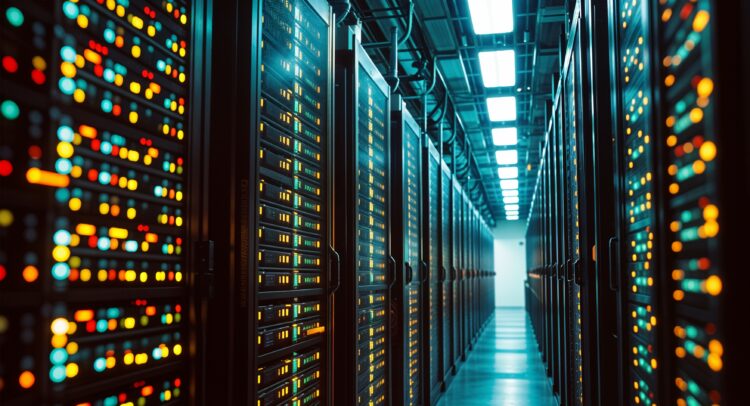Artificial intelligence is driving demand for new data centers and electricity higher. According to Goldman Sachs Research (GS), global data center power use is set to climb from 1% to 2% of all electricity in 2023 to as much as 4% by 2030. In the U.S., the share could more than double from 4% in 2023 to over 8% by the end of the decade.
Elevate Your Investing Strategy:
- Take advantage of TipRanks Premium at 50% off! Unlock powerful investing tools, advanced data, and expert analyst insights to help you invest with confidence.
Today, data centers consume about 62 gigawatts of power. Cloud services account for 58% of this, while traditional workloads account for 31%, and AI accounts for 13%. By 2027, Goldman Sachs expects AI workloads to reach 28% of the total, with cloud slipping to 50% and traditional work falling to 21%.
At the same time, construction is surging. Spending on data centers in the U.S. has tripled in the past three years. Even with the extra supply, occupancy levels remain near record highs in most major markets.
Rising Capital Expenditures
Goldman Sachs notes that capital spending from the largest technology firms is increasing at a rapid pace. The five biggest U.S. hyperscale operators, which include Amazon (AMZN), Microsoft (MSFT), Alphabet (GOOG), Meta Platforms (META), and Apple (AAPL), are projected to spend $736 billion across 2025 and 2026. For comparison, in 2023, these same firms spent $132 billion.
Meanwhile, the technology inside data centers is also changing. Servers used for AI now rely on specialized graphics processing units, or GPUs. These systems draw far more power than past designs. By 2027, a single rack with 576 GPUs could require 600 kilowatts of power, which is roughly equivalent to the electricity use of 500 U.S. homes. Retrofitting older sites to meet this scale is difficult, so new facilities are being built to handle the load.
Global Reach and Risks
North America and the Asia Pacific remain the leading regions for capacity growth, with hubs in Northern Virginia, Texas, Shanghai, and Beijing. In Europe, utilities report a surge in connection requests, which has ended a decade-long decline in electricity demand.
China is also investing more in its own semiconductor supply. Goldman Sachs expects Chinese capital spending on chip production to rise from $43 billion in 2025 to $46 billion by 2030. The research team sees the share of global wafer equipment revenues in China reaching 38% by 2027, up from 22% in 2022.
For investors, the outlook shows both opportunity and risk. On one hand, more spending supports demand for utilities, chipmakers, data center operators, and related suppliers. On the other hand, analysts note the risk that companies may struggle to monetize AI at scale or that new technology could lower costs and reduce demand growth.
Goldman Sachs highlights that global data center power use could make the sector a top ten electricity consumer by 2030. Yet the return on the massive investment still depends on how quickly AI models deliver clear gains for business and society.
Using TipRanks’ Comparison Tool, we’ve lined up and compared the five major AI spenders: Nvidia, Meta, Microsoft, Apple, and Amazon. This helps investors gain a broader look at the stocks and the industry as a whole.

















